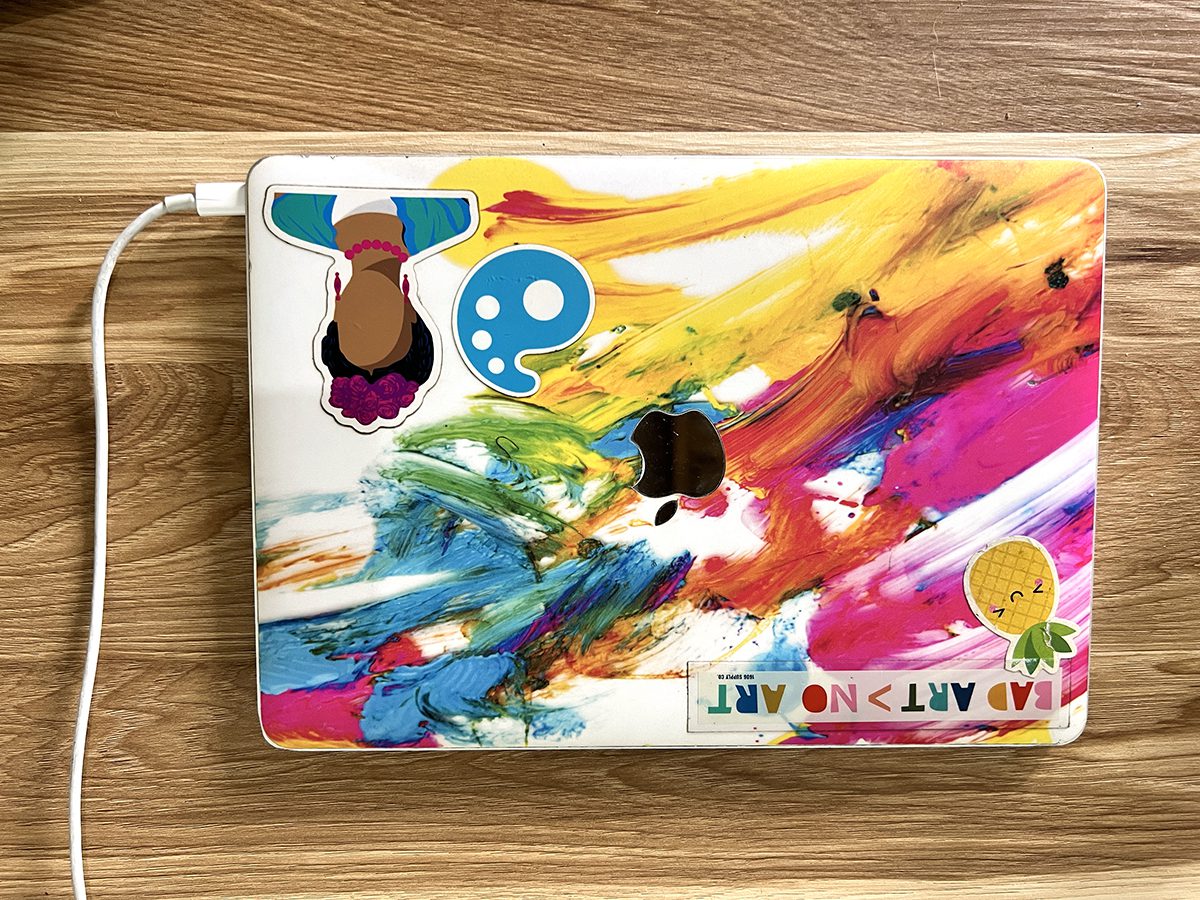Art teachers can do anything, but not everything. Read that again. You can do anything, but you can’t do everything. Instead of trying to do it all, use your executive functioning to focus on what matters and manage all of the things already piling up on your plate.
Let’s face it—your brain’s free-thinking, creative right side often takes over and it can be hard to get things done. Planning, organization, time management, and boundary setting are key executive functions. Use them to develop the resilience you need to handle the many demands of being an art teacher.
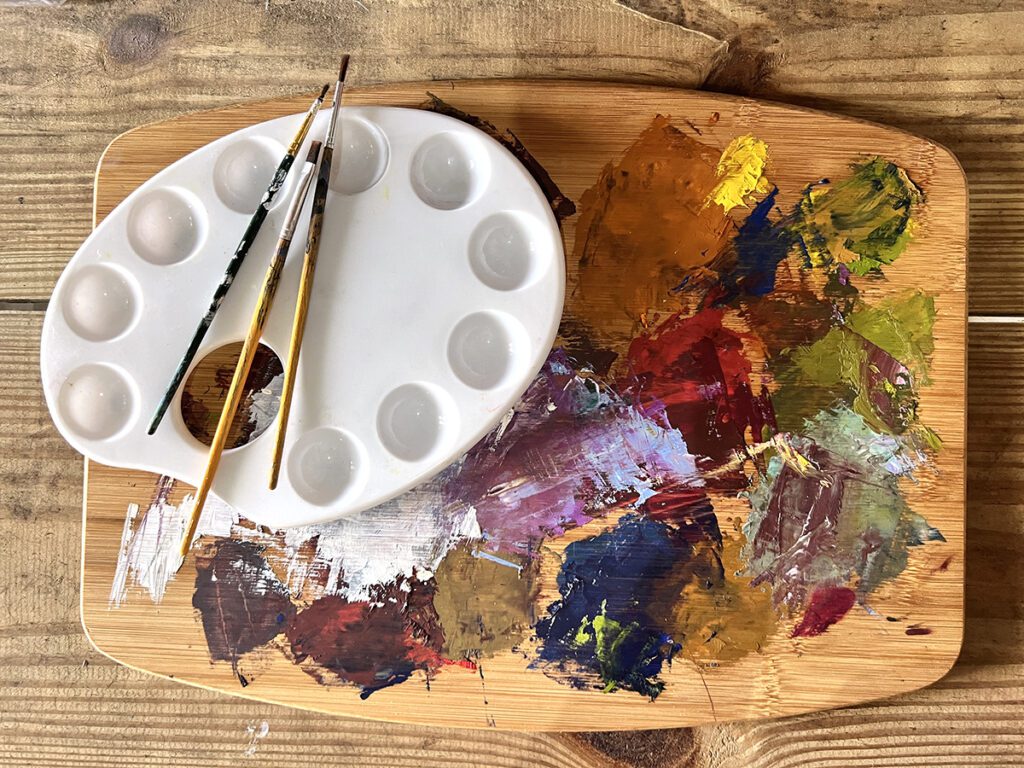
Build resilience with executive functioning so you can tackle what’s most important.
When you feel crushed by your never-ending to-do list, lean on your brain’s executive functioning capacities. Your executive functions are the higher-level cognitive skills that allow you to plan, execute, and reach your goals. In other words, they help you get things done. They also help you stay focused, resist temptations, and meet unanticipated challenges. Your resilience grows and changes as you practice these skills. You become better equipped to make daily choices in your art room that move you toward where you want to go.
Though the list of executive functions is long and varied, here are some of the key skills:
- Planning
- Organization
- Time Management
- Task Initiation
- Problem-Solving
- Flexibility
- Working Memory
- Emotional & Impulse Control
- Attention & Focus
- Self-Monitoring
- Metacognition
- Perseverance
Focus your energy on executive functions that have the power to improve your art teacher habits. You’ll have your stress under control in no time!
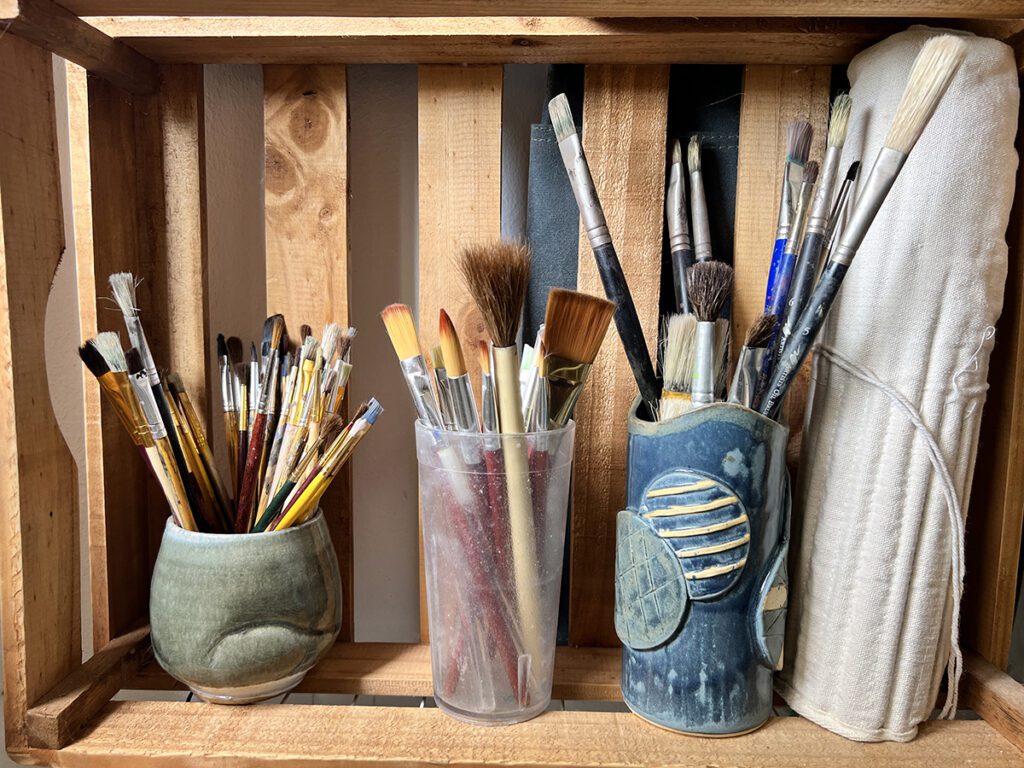
Planning and Organizing
Planning and organizing skills help map out goals and break them down into smaller tasks. Setting SMART, realistic goals that reflect what you value in your art room is important. Most art room goals revolve around preparing projects, maintaining a clean space, and creating learning resources. Make sure you also plan to invest in your personal development and professional growth. One way to do this is through relevant, hands-on tutorials and resources designed for art teachers through PRO Learning.
Here are four things you can do this week:
- Schedule a weekly planning session with yourself.
Set aside 30 minutes each Monday morning. Start your week with a brain dump of everything you need to do. Get it all out of your head and onto sticky notes, a whiteboard, or a legal notepad where you can see it. Then, use a handy diagram to prioritize every task. - Write down your top three daily priorities each morning.
Look at your list of must-dos for the day and decide on the most important one based on time sensitivity. Write it on a sticky note and put it on your computer screen. Take one step to move toward completing this item every chance you get. - Designate a planner for everything school-related.
Record everything in one place to keep your tasks from getting lost. Physically write in a paper planner or sync all your devices with a digital planner. Decide what works for you, invest time to set it up, and stick with it! - Let AI do the planning for you!
Take digital planning to the next level using AI to generate lesson plans and weekly schedules. AI has its limitations but can be a good starting place. Proof and review your AI-generated plans to fit your needs and add your own spark of inspiration.
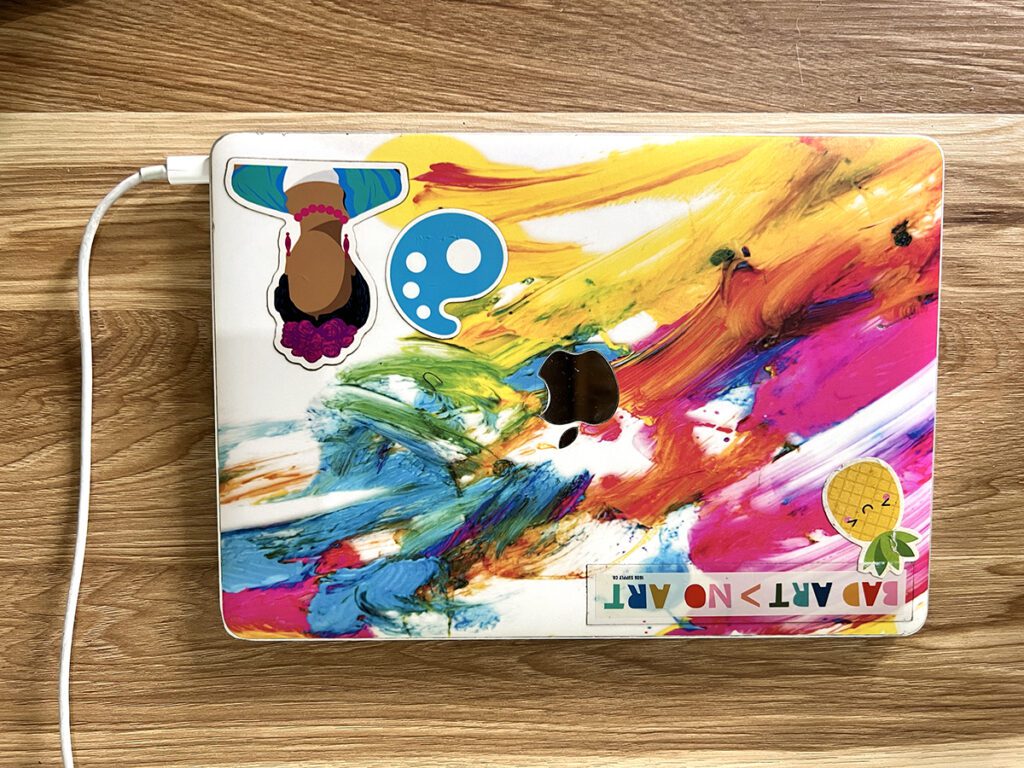
Task Initiation and Time Management
Time management involves your ability to do your best work in a given amount of time. Start your work immediately and monitor how long tasks take. The more you do this, the easier it will get. You will also be more likely to keep to your commitments. Remember, you can’t do everything! Look for ways to let go of some practices in your art room and make others more efficient for the best results!
Here are four things you can do this week:
- Do the hardest task first thing in the day.
Motivation is usually the highest at the beginning of the day or week when all of your energy reserves are fresh. Pick the most mentally or physically taxing item on your daily priorities list and knock it out first. - Choose one prep task to give up.
It’s okay to make sacrifices to prioritize what you value. For example, a priority for the year is for your students to master acrylic painting techniques. However, you don’t want to bother painting some days because you can’t deal with paint-covered palettes left behind in the sink! Skip the washing and opt for magazine pages, wax paper, or paper plates instead. - Look for simpler and easier ways to do routine tasks.
Instead of pouring hours into detailed lesson plans, integrate standards-aligned lessons, assessments, artist bios, videos, and more from FLEX Curriculum. Work smarter, not harder! - Establish standard operating procedures.
Tackle recurring tasks the same way every time. One way to do this is to write a thoughtful report card comment you can copy and paste. Feel free to personalize it for students with exceptional or challenging behaviors.
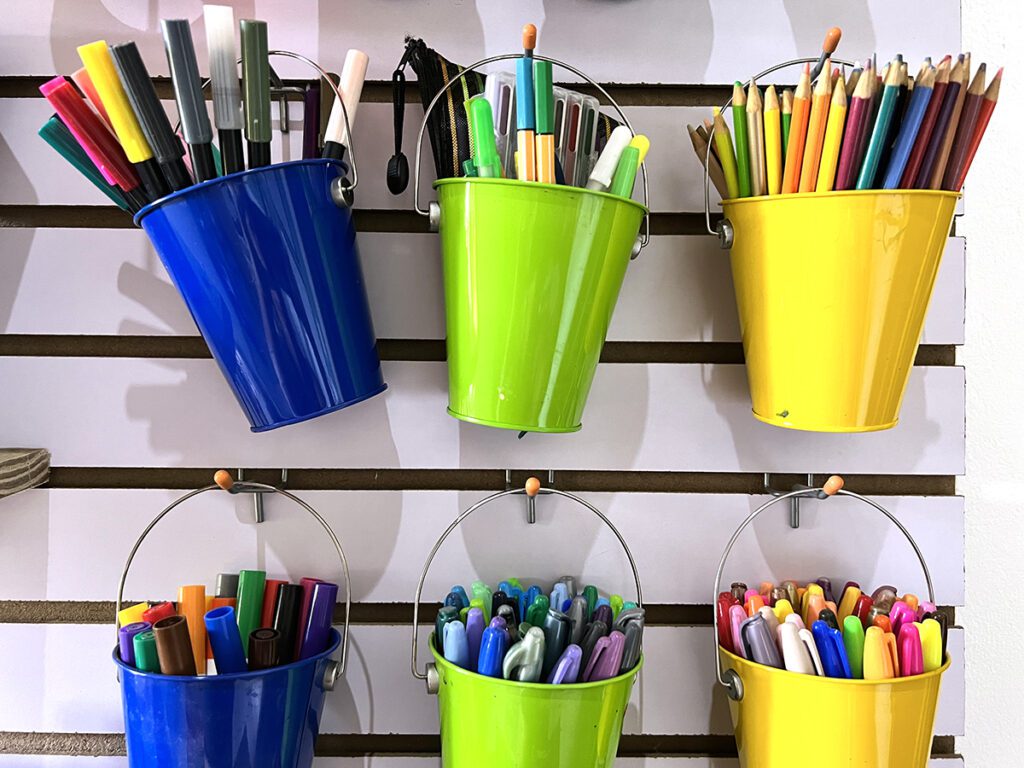
Self-Management and Flexibility
Self-management skills allow you to take responsibility for your well-being while on the job. You are already a pro at adapting to meet the demands of your art room. The problem is, you don’t always schedule margin in your life. Margin gives you extra space in your energy tank and calendar to be your wonderful, flexible self when things don’t go as expected or last-minute demands pop up. Protecting your time and space enables you to lead a proactive, purposeful art teacher life.
Here are four things you can do this week:
- Take a 20-minute art break.
Set aside your lunch period each Friday for you. Empty your art room of students, set a timer, and sit down to make some art. Even your capable, creative brain needs time to unwind after a long week. - Put an Open/Closed sign on your door.
Lock your door and flip the sign to “Closed” to protect your prep and lunch times. Indicate on your sign alternative times you are available to help visitors. Include your email to remind others they can always reach you there. - Cap your extra commitments.
Decide early on what school initiatives you want to commit to outside of your regular schedule. Then, stick with your word and say no to programming beyond that. A good rule of thumb is to spend no more than one extra hour at school once or twice a week. - Build time into your schedule for the unexpected.
Leave your Wednesday prep period clear of tasks so you can be flexible throughout the week. Unscheduled meetings and opportunities come up all the time. With the space of a task-free hour, you can easily adjust your schedule to accommodate your ever-shifting art room needs.

Setting Boundaries
Set physical and emotional boundaries between yourself and others. It’s a form of self-care that allows you to focus on your goals and priorities. As a bonus, your increased autonomy and stable mental state decrease the likelihood of burnout. When you set healthy boundaries, you can truly say yes to your students, classroom, art program, and yourself.
Here are four things you can do this week:
- Screen all requests with a simple checklist.
Identify the benefits, time and effort cost, and enjoyment level. Say no if the proposition doesn’t check all of your boxes. This is an easy way to determine what is yours to take responsibility for and what is not. - Recommend alternatives instead of volunteering yourself.
You know the most artistic and enthusiastic artists at school. Delegate projects to them you don’t have the time to take on. They will be empowered and honored! - Come up with a standard phrase to say no.
Make sure your response is clear so the other party knows you cannot help. Try, “Thank you for asking, but that won’t work for me right now,” or a simple, “No, thank you.” Write your phrase where you can see and use it as often as needed. - Unplug from school.
Leave work at school when you go home at the end of the day. Take school email off your phone and turn district and school notifications off on the weekends. Everything will still be there when you return tomorrow. Take some time for yourself!
Executive functioning skills help you find balance. Use your new planning and organizational skills to map and achieve your art room priorities through task initiation and time management. Set crucial boundaries to prevent overburdening and overwhelming your capacity levels. Give yourself flexibility so you can meet your students’ needs in an ever-evolving art room. Position yourself for success this school year and beyond. Take the time to look inward and hone your habits. Just think about it—soon you’ll be able to get the things done that are important to you and you’ll lead the productive, creative art teacher life of your dreams!
Which tip are you going to implement this week?
Share an executive functioning skill that’s a strength and one you need to work on.
Magazine articles and podcasts are opinions of professional education contributors and do not necessarily represent the position of the Art of Education University (AOEU) or its academic offerings. Contributors use terms in the way they are most often talked about in the scope of their educational experiences.
